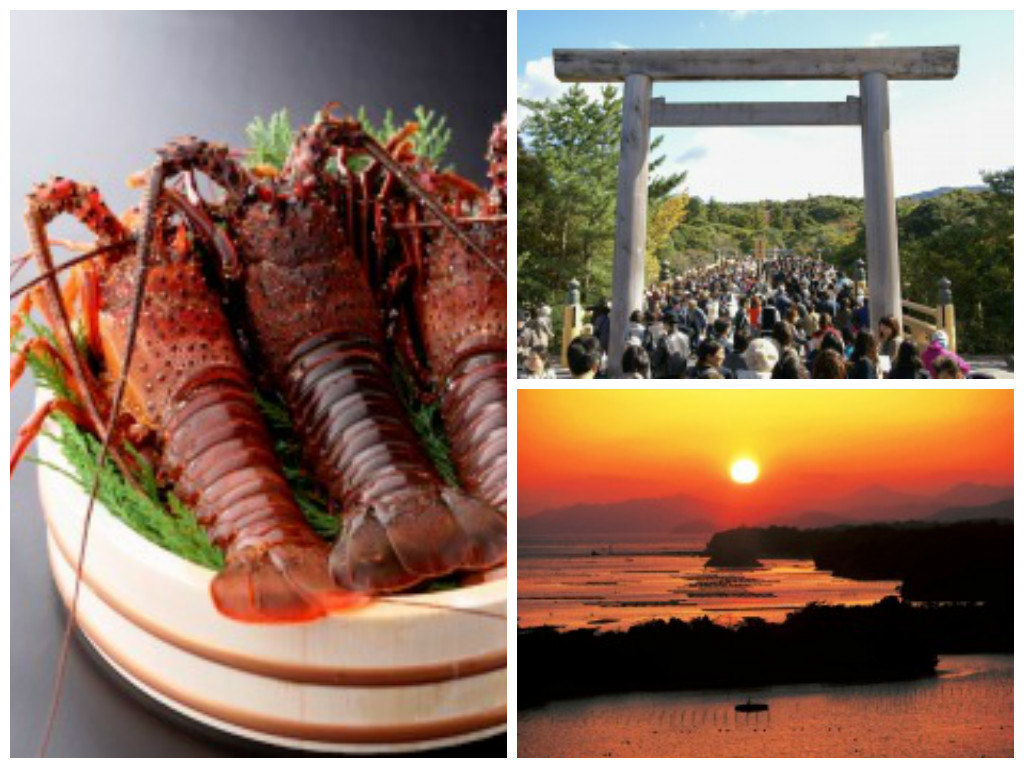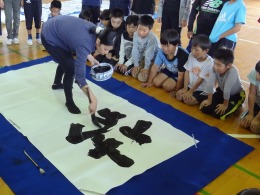実施日 : 2016年05月11日(水) - 12日(木)
Notice: Pre-Summit Press Tour to Mie
投稿日 : 2016年04月26日
<The G7 Summit venue and surrounding area, 2 weeks before the summit>
- Summit venue and Ise Jingu -
- Wisdom of island fishers for sustainable fishing -
- Last ink maker in a region that made ink for the last 1200 years -
- Industrial machinery manufacturer supporting factories worldwide -
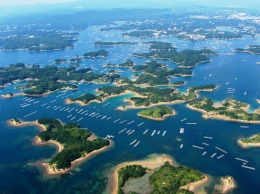 The 42nd G7 Summit to be held on May 26–27 this year will be in the Ise-Shima region in Mie Prefecture. The venue will be Kashikojima, a small island found floating in the midst of a bountiful sea.
The 42nd G7 Summit to be held on May 26–27 this year will be in the Ise-Shima region in Mie Prefecture. The venue will be Kashikojima, a small island found floating in the midst of a bountiful sea.
It would be remiss to speak of the Ise-Shima region without mentioning Ise Jingu. Japan’s largest shrine, it is a major holy site that is visited by 8.38 million people per year.
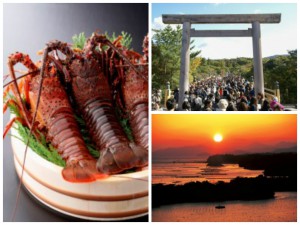 This region is also surrounded by bountiful seas, and has a long tradition of fishing, having historically made offerings of seafood to Ise Jingu. The residents of one island in particular, Toshijima Island, display their wisdom with fishing that will avoid exhausting the sea’s resources. The local fishers have independently set their own rules to follow, and might be considered a model for sustainable development. This is also the last place in Japan where the neyako custom remains, a rite of passage for boys to become adults.
This region is also surrounded by bountiful seas, and has a long tradition of fishing, having historically made offerings of seafood to Ise Jingu. The residents of one island in particular, Toshijima Island, display their wisdom with fishing that will avoid exhausting the sea’s resources. The local fishers have independently set their own rules to follow, and might be considered a model for sustainable development. This is also the last place in Japan where the neyako custom remains, a rite of passage for boys to become adults.
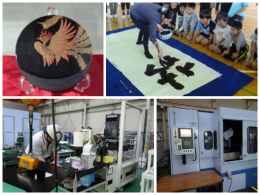
One of the traditional industries found in Mie is ink making, which has a history of 1200 years in the prefecture. The father and son pair of craftsmen who run the last remaining ink maker in the area are betting the industry’s survival on the development of new products and overseas exports. Mie is also home to an industrial machinery manufacturer that, despite being an SME, helps support craftsmanship at factories around the world.
---------------------------------------------------------------------------------------------------------------------
This press tour will visit Mie Prefecture two weeks before the G7 Summit is held, and cover the venue for the summit. The tour will also include Ise Jingu, vital to any discussion of the area; an island where sustainable fishing is carried out; craftsmen doing their best to ensure traditional ink making does not die out; and an SME active in the global market.
---------------------------------------------------------------------------------------------------------------------
*This press tour is sponsored by Mie Citizens Council for the Ise-Shima Summit and the Ministry of Foreign Affairs, and planned and operated by the FPCJ.
【Tour Details】
1. Summit Venue
A historic hotel on a small island in the sea
・Shima Kanko Hotel
http://www.miyakohotels.ne.jp/shima-classic/english/index.html/
http://mie.summit-net.jp/index_en.html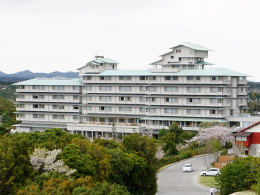
The 42nd G7 Summit planned for May 26–27, 2016 will be held at Kashikojima, in Shima, Mie. Located in Ago Bay, this small island has a circumference of 7.3 kilometers and a population of 98.
The summit will be held at Shima Kanko Hotel, which opened in 1951 as the first resort hotel in Japan after the Second World War.
◆The tour will visit the Shima Kanko Hotel and view the hotel exterior.
2. Japan’s Largest Shrine, Ise Jingu
A major holy site in Japan, where prayers are made for bountiful harvests and national prosperity
http://www.isejingu.or.jp/foreign/index.html
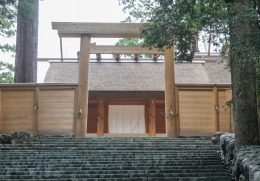 Ise Jingu is principally composed of the Naiku, where Amaterasu Omikami is worshipped, and the Geku, where Toyouke Omikami is worshipped. It also includes 125 other subsidiary Shinto sanctuaries. With a total area of approximately 55 square kilometers, it is the largest shrine in Japan. It accounts for one third of Ise City, and is close to the same size as Paris.
Ise Jingu is principally composed of the Naiku, where Amaterasu Omikami is worshipped, and the Geku, where Toyouke Omikami is worshipped. It also includes 125 other subsidiary Shinto sanctuaries. With a total area of approximately 55 square kilometers, it is the largest shrine in Japan. It accounts for one third of Ise City, and is close to the same size as Paris.
Every single day, religious ceremonies are carried out to pray for bountiful harvests and national prosperity, and give thanks to the gifts of nature.
During the Edo period (late 17th to early 19th century), commoners from around the country would walk to Ise Jingu on a pilgrimage. Pilgrimages were so popular that there is a song with lyrics about wanting to go at least once in this life. It is said that in busy years, over five million pilgrims would visit the shrine. With the population of Japan at the time estimated to be only 30 million, this would mean approximately 16% of the country’s population visited Ise. Even now in modern times, 8.38 million people visited in 2015.
◆The tour will visit Ise Jingu, and hear an explanation while touring the grounds.
3. Toshijima Island: Traditional Fishing Wisdom to Prevent Exhausting Resources
Hints for sustainable development
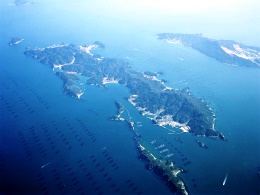 Toshijima is an island based around the fishing industry, with an area of approximately 7 square kilometers and a population of 2,235, and is part of Toba City in Mie Prefecture’s Ise-Shima region. The island has historically made offerings of seafood to Ise Jingu. The nearby waters have excellent fishing, as the Kuroshio Current of the Pacific Ocean meets with the nutrient-rich water of Ise Bay. In order to maintain the sea’s resources and make them available to following generations, the local fishers follow a variety of resource management rules they have established themselves. This is also the only place in Japan where the neyako custom, a community-building tradition, is still practiced.
Toshijima is an island based around the fishing industry, with an area of approximately 7 square kilometers and a population of 2,235, and is part of Toba City in Mie Prefecture’s Ise-Shima region. The island has historically made offerings of seafood to Ise Jingu. The nearby waters have excellent fishing, as the Kuroshio Current of the Pacific Ocean meets with the nutrient-rich water of Ise Bay. In order to maintain the sea’s resources and make them available to following generations, the local fishers follow a variety of resource management rules they have established themselves. This is also the only place in Japan where the neyako custom, a community-building tradition, is still practiced.
(1) Neyako Custom
A rare tradition continued only in this area, strengthening community bonds
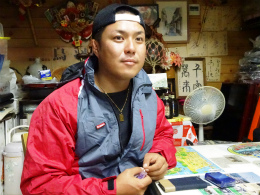 Toshijima is the only place in Japan where the neyako custom still exists. The tradition was widespread in villages throughout Japan during the Edo period, as a rite of passage for boys to become adults. The tradition faded along with modernization, and now Toshijima is the only place in Japan where it is still practiced.
Toshijima is the only place in Japan where the neyako custom still exists. The tradition was widespread in villages throughout Japan during the Edo period, as a rite of passage for boys to become adults. The tradition faded along with modernization, and now Toshijima is the only place in Japan where it is still practiced.
Currently, a group of five or six boys who graduated from junior high school are being taken care of together by a couple other than their parents, teaching them necessary life skills and giving them life advice. These people, 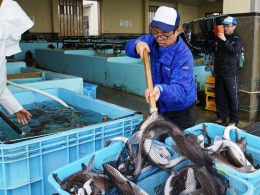 who act as a second set of parents to the boys, are called “neya-oya” (neya parents). The boys eat supper with their own family, and then go to the neya parents’ house to spend the night there. In recent years, they do not necessarily sleep there every night, but they will be welcomed whenever they want to go. This custom starts when the boys are around 15 years old, and continues until they are 26, but they form familial bonds that will last a lifetime with their neya parents and the other boys of the same age who are neyako with them (neyako brothers). There is an old saying that neyako brothers will help each other dig their parents’ graves.
who act as a second set of parents to the boys, are called “neya-oya” (neya parents). The boys eat supper with their own family, and then go to the neya parents’ house to spend the night there. In recent years, they do not necessarily sleep there every night, but they will be welcomed whenever they want to go. This custom starts when the boys are around 15 years old, and continues until they are 26, but they form familial bonds that will last a lifetime with their neya parents and the other boys of the same age who are neyako with them (neyako brothers). There is an old saying that neyako brothers will help each other dig their parents’ graves.
According to Mr. Yuya Yamashita, a 26 year old who experienced neyako, “Neyako is fun. Everyone does it because they want to. As a teenager, it was easier to talk to my neya parents than my own parents, and they gave me a lot of advice.” One adult that has been a neya parent said “The adults learn a lot too.” The neyako custom was designated as an Intangible Folk Cultural Property by Toba City in 1985.
◆The tour will travel to Toshijima and visit a household that is currently taking care of neyako. There will be opportunities to interview the neya parents and the young neyako they help with.
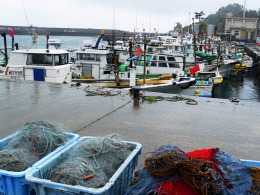
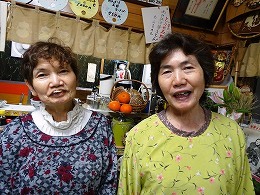
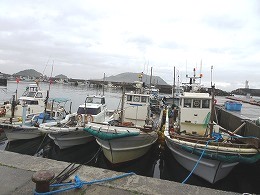
(2) Rules Fishers Made Themselves to Enable Sustainable Fishing
Wisdom to pass the resources of the sea onto the next generation
http://www.osakanaikiiki.com/uminomori/ime/r.pdf
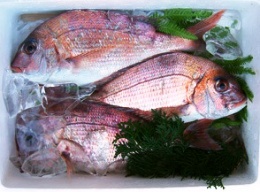 Toshijima is home to unique resource management methods and wisdom carried out by fishers. Fishers in Mie Prefecture have set limits on the size of fish such as flounder that can be caught, but the locals of the island have set even stricter limits to follow. The common regulation in Prefecture allows flounder to be caught if its total length is 20 cm or longer, but here flounder less than 30 cm is released. They have also independently banned using bait that dirties the ocean (such as akiami paste shrimp). Additionally, there is a rule where if the fish they catch, or the local seaweed, does not seem to be growing well, the local fishers will discuss it and temporarily stop fishing. Since 2005, in an attempt to stop the decline of arame, a kind of seaweed used as abalone feed, the younger members of the fishing cooperative, in their 20s to 40s, have been continually sinking rocks to the sea bottom, with arame planted on them. Local junior high school students are also involved in this plan to develop the local sea vegetation.
Toshijima is home to unique resource management methods and wisdom carried out by fishers. Fishers in Mie Prefecture have set limits on the size of fish such as flounder that can be caught, but the locals of the island have set even stricter limits to follow. The common regulation in Prefecture allows flounder to be caught if its total length is 20 cm or longer, but here flounder less than 30 cm is released. They have also independently banned using bait that dirties the ocean (such as akiami paste shrimp). Additionally, there is a rule where if the fish they catch, or the local seaweed, does not seem to be growing well, the local fishers will discuss it and temporarily stop fishing. Since 2005, in an attempt to stop the decline of arame, a kind of seaweed used as abalone feed, the younger members of the fishing cooperative, in their 20s to 40s, have been continually sinking rocks to the sea bottom, with arame planted on them. Local junior high school students are also involved in this plan to develop the local sea vegetation.
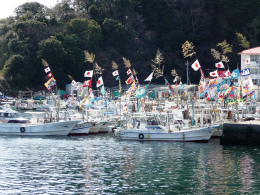
It is suggested that the reason the fishers can make their own rules, and then have everyone understand and follow them for the benefit of the community as a whole is due to the strong communal ties made thanks to the neyako custom. Not only do they want to make the sea’s bountiful resources available for future generations to benefit their own descendants, but for everyone. Thanks to the neyako custom, they think of all the youth in the area as their own children.
◆The local fishers will explain their methods for resource management, and show their efforts to restore the seaweed bed.
(3) An Island Where Youth Return to Become Fishers
Aiming to create high added value with marine resource management and brand development
・Japan Fisheries Cooperative Toba Isobe, Toshi Branch; Director, Kohei Nakamura (68)
http://www.osakanaikiiki.com/shisho/2.htm#toushi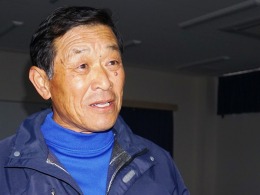
The number of people working in the fishing industry in Japan is decreasing every year. Currently that number is 167,000 (as of 2015), a decrease of 36,000 compared to five years before. People over 65 years old also account for over 40% of the total. Declining marine resources have led to lower incomes for fishers, and so fewer young people are joining the industry.
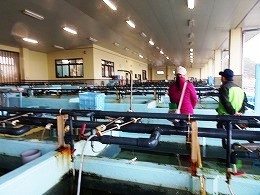
However, in Toshijima there are many people who follow in their parents’ footsteps and become fishers, or return to the island to fish after having lived elsewhere. There are 617 people working in the fishing industry on the island (as of 2013). With 67 (11%) fishers in their teens to 30s, and people 65 years old or older accounting for 27%, the average age is significantly lower than the national average.

Mr. Kohei Nakamura, head of the local fisheries cooperative, says “I want to create an environment where youth who have gone to the big city can come back and join the fishing industry.” On the island, they have worked on managing and maintaining marine resources, as well as improving both port and market facilities. There are fish tanks available so that fish caught at sea can be auctioned off live, and ice-making equipment to make ice to bring on the fishing boats. By increasing the freshness of fish bought there, they plan to increase its added value and develop the local brand. The island’s catch for fiscal 2014 was 1.94 billion yen, which is similar to the value for ten years earlier, demonstrating the island’s success in maintaining the same high level.
◆The tour will hear from Mr. Nakamura, director of the fisheries cooperative, and see the lively fishing port and market. There will also be interviews with young people who came back to the island from bigger cities to become fishers.
4. The Last Remaining Ink Maker in an Area with 1200 Years of History Producing Ink
As the number of people in Japan who do calligraphy decreases, a father-and-son team have begun making new products and exporting overseas
・Suzukazumi manufacturer: Sinseido Co., Ltd. President Tadashi Ito (51)
Harunobu Ito (28)
Black ink entered Japan from China via the Korean Peninsula. It has long been used in East Asia both to write words and paint pictures. Due to its resistance to water, rot, and insects, it lasts long enough that words written several thousand years ago can still be read. Its main ingredients are soot made from burning wood, and animal glue made from animal skins and bones. These are mixed together in order to make the ink.
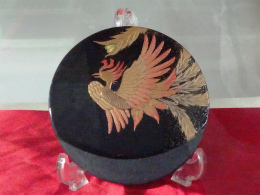 The suzukazumi that is a specialty of Suzuka City, Mie was first made during the Heian period (around the year 800), and has 1200 years of history. As temple schools became more common in the Edo period, demand increased, with a corresponding increase in production.
The suzukazumi that is a specialty of Suzuka City, Mie was first made during the Heian period (around the year 800), and has 1200 years of history. As temple schools became more common in the Edo period, demand increased, with a corresponding increase in production.
After the collapse of the bubble economy, demand has declined. Schools adopting cheaper substitutes made from petroleum for their calligraphy classes was a major blow to the industry. The number of manufacturers in Suzuka steadily decreased until 2005, when Sinseido was the only ink maker remaining. Throughout Japan, four ink makers in Nara are the only ones remaining aside from Sinseido.
Of these, Sinseido’s Mr. Tadashi Ito is the only one officially designated as a traditional craftsperson by the Japanese government, and he continues to make the highest quality ink by hand. As the average age of people that do calligraphy rises, Mr. Ito planned on letting the traditional business end with his generation. However, his son Harunobu returned from Tokyo in 2010 and began training to be his successor, in order to prevent 1200-year-old tradition from ending.
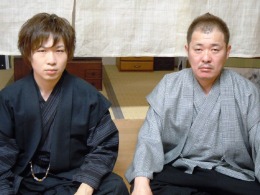 In order to pass the techniques for making ink on to future generations, the Itos began developing products in new areas. One popular product has pigments mixed in with the ink, for a product that has a variety of colors and is resilient to fading like ink, and can be used for a variety of purposes such as to dye fabrics. With the goal of creating ink-based products to use in all facets of life, they have also made architectural paints that take advantage of the insect and rot resistance and deodorization properties of ink, and even incense and cookies using ink. These new products account for 20% of overall sales. Sinseido also exports ink overseas, to countries such as China, which accounts for 10% of its sales. The ink is valued particularly highly in China, where local techniques died out after the Cultural Revolution, and wealthy Chinese buyers will purchase inksticks costing up to 300,000 yen each.
In order to pass the techniques for making ink on to future generations, the Itos began developing products in new areas. One popular product has pigments mixed in with the ink, for a product that has a variety of colors and is resilient to fading like ink, and can be used for a variety of purposes such as to dye fabrics. With the goal of creating ink-based products to use in all facets of life, they have also made architectural paints that take advantage of the insect and rot resistance and deodorization properties of ink, and even incense and cookies using ink. These new products account for 20% of overall sales. Sinseido also exports ink overseas, to countries such as China, which accounts for 10% of its sales. The ink is valued particularly highly in China, where local techniques died out after the Cultural Revolution, and wealthy Chinese buyers will purchase inksticks costing up to 300,000 yen each.
◆ The tour will visit Sinseido and see the ink-making process. There will also be a calligraphy performance. This will be followed by hearing from Mr. Tadashi and Mr. Harunobu Ito about developing new products using ink, exporting overseas, and keeping traditional industries alive.
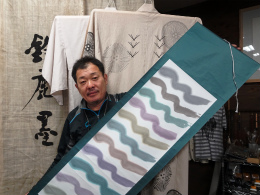
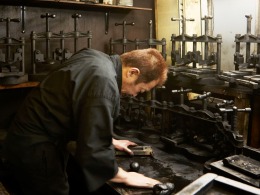

5. Industrial Machinery Manufacturer Supporting Factories Worldwide, Producing Everything from Smartphones to Airplanes.
An SME entering the global market with its unique techniques
・Hikari Kikai Seisakusho Co., Ltd. President, Keiko Nishioka
http://www.hikarikikai.co.jp/english.html (English)
http://www.hikarikikai.co.jp/chinese.html (Chinese)
Hikari Kikai Seisakusho Co., Ltd. started business in 1946. Over the past 70 years, this industrial machinery manufacturer SME has made mainly grinding machines and cutting tools, with approximately 100 employees. Grinding machines rotate a grinding stone to shave down or polish materials, and are used when making machine parts. Cutting tools are also used for processing machine parts.
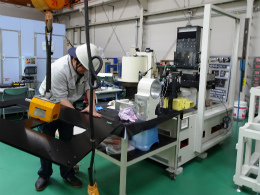 The industrial machinery and cutting tools made by Hikari Kikai Seisakusho can perform precise work with different materials and purposes, and are used in the parts manufacturing process in a variety of industries, from smartphones to automobiles and airplanes. The company has the highest market share domestically in the category of special processing. Customers are impressed by their unique techniques, and the company makes many products designed to match customers’ needs, supporting craftsmanship from behind the scenes.
The industrial machinery and cutting tools made by Hikari Kikai Seisakusho can perform precise work with different materials and purposes, and are used in the parts manufacturing process in a variety of industries, from smartphones to automobiles and airplanes. The company has the highest market share domestically in the category of special processing. Customers are impressed by their unique techniques, and the company makes many products designed to match customers’ needs, supporting craftsmanship from behind the scenes.
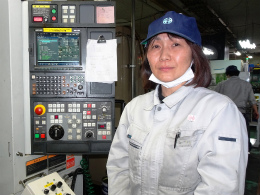 Their products are distributed not only within Japan, but to factories around the world including in China, Germany, India, South Korea, and Taiwan, with exports accounting for over 50% of their total sales of 1.2 billion yen. Some processes cannot be performed without machines from Hikari Kikai Seisakusho, such as manufacturing the precision components for smartphones. As manufacturing shifts to other countries such as China due to globalization, Hikari Kikai Seisakusho has come to support craftsmanship throughout the world. Recently, since there are high numbers of inexperienced and female workers in parts factories in Southeast Asia, in order to target this market the company has been developing industrial machinery that incorporate the opinions of female staff.
Their products are distributed not only within Japan, but to factories around the world including in China, Germany, India, South Korea, and Taiwan, with exports accounting for over 50% of their total sales of 1.2 billion yen. Some processes cannot be performed without machines from Hikari Kikai Seisakusho, such as manufacturing the precision components for smartphones. As manufacturing shifts to other countries such as China due to globalization, Hikari Kikai Seisakusho has come to support craftsmanship throughout the world. Recently, since there are high numbers of inexperienced and female workers in parts factories in Southeast Asia, in order to target this market the company has been developing industrial machinery that incorporate the opinions of female staff.
President Keiko Nishioka’s philosophy is that people who have the skill and want to work should be able to work regardless of gender, age, or nationality. The company has women working in design, production management, and on the production floor, with women accounting for over 30% of the total staff. There are also employees from other countries such as China, India, Indonesia, and Turkey.
◆Ms. Nishioka, president of Hikari Kikai Seisakusho, will discuss topics such as the management policies necessary for an SME to compete on the global market. There will also be an opportunity to see the production floor.
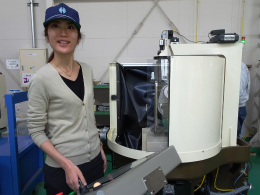
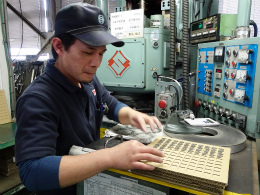
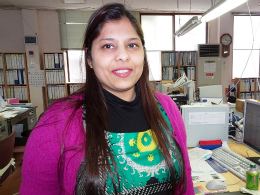
【Tour Outline】
1. Tour Dates: Wednesday, May 11-Thursday, May 12, 2016
Day 1: Wednesday May 11
7:13 Leave Tokyo Station (Shinkansen and Kintestu)
10:50-11:50 Ise Jingu Shrine (Naiku)
11:50-13:00 Travel by bus/Lunch
13:00-14:30 Summit venue, Shima Kanko Hotel
15:20-15:50 Travel by chartered ferry
16:00-17:00 Management of sea resources (See restoration of seaweed bed)
17:45-19:45 Dinner with local officials and interviewees
20:00-21:15 “Neyako” custom (Interview with islanders)
Day 2: Thursday May 12
8:30 Leave hotel
8:45-11:40 Fishery in Toshijima Island (fishery harbor, market, interview with fishers)
11:50-12:20 Travel by chartered ferry
12:20-13:50 Travel by bus/Lunch
13:50-15:35 “Suzukazumi” Sinseido
15:50-16:10 Travel by bus
16:10-18:10 Hikari Kikai Seisakusho (Industrial machinery manufacture)
18:47 Leave Mie
21:33 Arrive in Tokyo
2. Qualification: Bearer of Gaimusho Press Registration Card
3. Fee: 13,000 yen per person, including transportation, meals and accommodation
* FPCJ will later inform the participants of methods for payment, cancellation fee etc.
4. Number of participants: Limited to 8 applicants.
(Only one reporter and one photographer from each company, but two participants from each TV team will be acceptable.)
*If the number of applicants exceeds the maximum number of participants, we may limit the number of participants from each nation.
5. FPCJ tour organizer: Chika Yoshida(Tel: 03-3501-3405)
6. Notes:
(1) There may be some restrictions on photographing and filming at the tour sites. Please follow the instructions of the officials on duty.
(2) FPCJ, Mie Citizens Council for the Ise-Shima Summit and the Ministry of Foreign Affairs will not be liable for any inconvenience, trouble or accident that might occur during the tour.
(3) First 2 photos and Ise Jingu photo : Copyright © 2016 ISESHIMA TOURISM & CONVENTION ORGANIZATION

